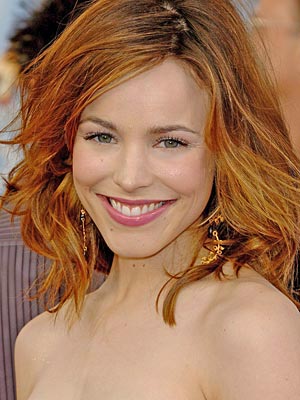 Why am I posting a profile on Kenneth Gamble and Leon Huff on an avowed movie blog? There are two reasons. First, the article is not available online, and I'd like people to see it. Second, movies are still using their songs in soundtracks, so it's not like there isn't a connection.
Why am I posting a profile on Kenneth Gamble and Leon Huff on an avowed movie blog? There are two reasons. First, the article is not available online, and I'd like people to see it. Second, movies are still using their songs in soundtracks, so it's not like there isn't a connection.
More importantly, I'm proud of the piece, because it proved to me the value of finding additional sources. Originally, I wanted to do a straight up Q&A with the legendary duo, but it quickly became apparent that wouldn't work. Gamble and Huff were somewhat bored, which I understand. They've been interviewed so many damn times, that any question I asked they've probably heard about 25 times.
And, in all honesty, I wasn't as prepared as I should have been. My questions should have been sharper and better organized.
So I decided to call secondary sources to attest to the producers/songwriters' importance. Five got back to me, including Earl Young, the legendary session drummer, and Joe Tarsia, G&H's sound engineer.
The article, in a slightly different form, appeared in the May issue of ICON, and is reprinted with permission. (Thanks, Trina.) ****************
"It did happen. You can't say what couldn't have."
"It's too scary to think about."
This is how Kenneth Gamble and Leon Huff respond, respectively, when presented with the following scenario: What if the legendary hitmakers, the architects of The Sound of Philadelphia (TSOP), had never met?
You can't blame them for dismissing such unpleasantness. Who wants to live in a world where we can't shimmy in our car seat to "Love Train"? Or where you can't belt "Close the Door" in the shower, the only acceptable venue for approximating the soulful yearnings of Teddy Pendergrass. Jeez, how many babies were made to "When Will I See You Again?", "Me and Mrs. Jones," and "Lady Love"?
The world long ago realized its good fortune. Philly native Gamble, 67, and Huff, 69, have been honored and feted thoroughly by various associations, colleges, halls of fame, and Philadelphia, the city that became their muse. Gamble and Huff Walk lies in front of the duo's headquarters, Philadelphia International Records—the famed record label they formed 40 years ago. Huff's hometown of Camden, NJ, features Leon Huff Way.
On Saturday, May 21, The Chamber Orchestra of Philadelphia will join the respectful masses, holding a Lifetime Achievement Award gala for the duo. The event, held at the Westin Philadelphia, starts at 6 p.m.
Not to take anything away from awards and tuxedoed dinners, but the highest honor may actually be a statistic: Every 13-and-a-half minutes, somewhere in the world, a Gamble and Huff song is played on the radio. The appeal of TSOP—soulful singing, lush arrangements, and eloquent lyrics—remains untarnished by time. And appreciated by just about every one. The Chamber Orchestra plans to release a CD featuring a selection of the duo's hits (in classical form, of course) sometime next year.
"That's the mark of a real original," says Bruce Warren, program director at Philadelphia's WXPN, 88.5 FM. "You can create something so unique that it may have some immediate influences, but it can still stand on its own."
"There is nothing today that is playable that will bring you back to a better time," says Jerry Blavat, the legendary Philadelphia deejay/mover n' shaker, who has known Gamble and Huff since before their nearly 50-year partnership. "Their music brings you back to a better time."
Even Huff doesn't tire of his music following him wherever he goes. "It still sounds great," he says.
******
From the start they were musical soul mates.
Huff instantly felt the chemistry. Their early output was staggering, and effortless—"five or six songs a day, like it was nothing," Gamble recalls. They'd write song titles on legal pads, one would stick out, and then "Huff would hit a chord on the piano, and that would be it," explains Gamble. "We'd be off to the races."
"You've got to talk songs, to me," Huff says. "We always talked about life itself, and all the activity that goes on in the world. Some great songs can come out of conversations or other people's mouths or anywhere." A tape recorder was always running.
The ease of their productivity belied the music's depth. Blavat says the duo not only captured America's swirl of social change in the 1970s—think of Harold Melvin & the Blue Notes' "Wake Up Everybody" and The O'Jays' "Back Stabbers"—but they "knew what was happening musically in the streets, and they took it to another level with full orchestration."
TSOP's distinct sound—classical elements like violins and French horns mingling with finger-snapping drums and bass guitar—came from another acronym, MFSB. The 42-piece orchestra's rhythm section featured members of The Romeos, Gamble's former band. "We had great musicians, see, and the thing that made us real great is that we played together all the time," Gamble says. "Everybody knew each other. You knew what the other person could do."
"That created a certain sound, a certain quality of sound, that kept getting better and better," Huff says.
"We could play anything," says renowned drummer Earl Young, who was a staple on TSOP tracks along with his late bandmates, bassist Ronald Baker and guitarist Norman Harris.
"The major part of our production and skill was rehearsal," says Gamble. "We would rehearse a couple of weeks before we would decide what songs we were going to do with the artist." The performer would sing the song, and then the musicians would work on the groove, says Young. "It was more of a feeling than cutting a record," he adds.
Young says Gamble had a great ear, which allowed the producer to pick one drumbeat from the vast array that the drummer played. Gamble still marvels over Huff's instincts for knowing—regardless of how trivial it might be—what belonged in a song.
"If the song warrants it, that little ding could be important," Huff says.
Creating the music was an instinctive, even personal process. Gamble insists that songs were written specifically for the artist—"We didn't write songs just to write them." But there were roles, according to Joe Tarsia, TSOP's recording engineer and founder of the legendary Sigma Sound Studios. Gamble, he says, was the "architect of the story," while Huff developed the music's rhythm and intensity.
A "basic rhythm concept" would be worked on in the studio, Tarsia says. Then, voices would be added; arrangers would write music for strings and horns. By the end, a song could contain dozens of parts. "But it was always more than less, so that in the final mix it left room to make arrangements that built and climaxed," he says. "It was sort of sexual in a way—there was some foreplay before you got to the climax of the song."
******
We're currently in the nostalgic afterglow. All you need to cut a record these days, Young says, is a computer before dropping the tracks in the studio.
Thanks to the Internet, the music industry's bar of entry is pretty much on the ground. "You're a producer if you say you are," says David Uosikkinen, the longtime drummer for The Hooters. Tarsia compares the changing music scene to television. There used to be three TV stations, he says, but "now we have 300 [and] no one can afford anything of substance."
"Musicians don't go to the studio and create music anymore," Young says.
"I think that's the way technology has changed music," says Uosikkinen, whose project, In the Pocket (www.songsinthepocket.org), features a rotating group of musicians playing songs either recorded in Philadelphia or by Philadelphians. "For better or for worse, that's how it is. It's expensive to do it [like Gamble and Huff]. There are a lot of economics involved. Just to get five great musicians into a room together costs money."
Just because something is the norm, doesn't make it right. "There's nothing like being in a studio [with musicians] because you're going to feel the real dramatics from the human beings that are going to be inflicted into your music," Huff says.
"Humans sweat," Gamble says. "That's what's missing from the records today, is the sweat and the effort and the energy. And the other thing that's missing from it is the mistakes that humans make that sometimes turn out to be something that's fantastic."
Gamble and Huff's collaborative, hands-on days do come back—every 13-and-a-half minutes, to be exact.
"That scene was remarkable," says Uosikkinen, who plans to record "Back Stabbers" with MFSB guitarists Bobby Eli and T.J. Tindall for In the Pocket. "It's part of Americana and it comes from our city. It's awesome."
 Considering the wacky Japanese to English translations and "The Hangover, Part II's" Asian flavor, it's not inconceivable that "Hangover Panda" is playing at a Tokyo movie theater.
Considering the wacky Japanese to English translations and "The Hangover, Part II's" Asian flavor, it's not inconceivable that "Hangover Panda" is playing at a Tokyo movie theater. 





